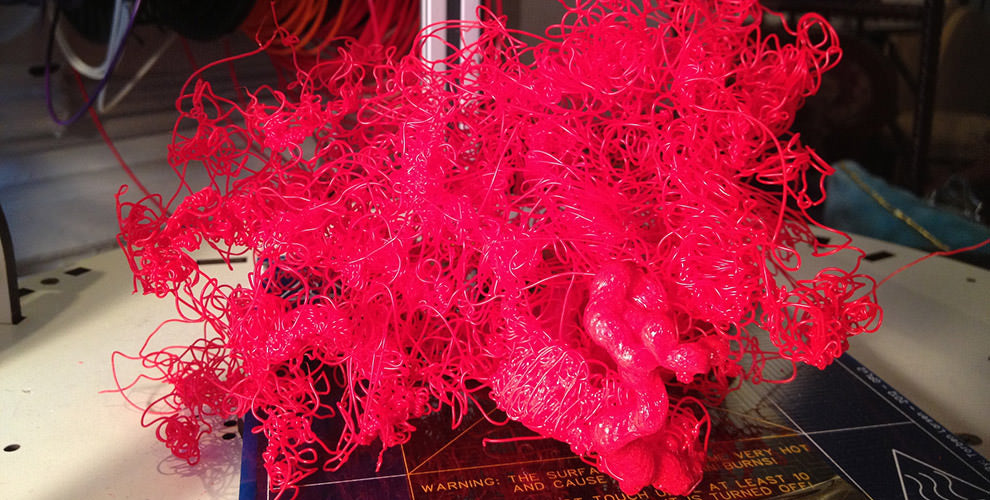
Plastic waste is a serious environmental problem. Each Australian generates 130 kg of plastic waste every year with only 9% of it is recycled. 91% lie festering in dumpsites and 130,000 tonnes end up in our waterways and into the ocean. (Source: WWF)
It is for this reason that we have to be conscientious about our 3D printing. Although it’s beyond our control, failed 3D prints can bring feelings of guilt and frustration, especially with the wasted material and time. Old prototypes or unwanted parts also take up space in our workrooms. Instead of throwing them away, here are ways that we could recycle our 3D print wastes.
1. Turn it into recycled 3D printer filament
There are two ways to go about this. The more expensive route is to buy a filament recycler, which can cost thousands of dollars, but, in turn, can give you recycled filaments throughout the machine’s lifetime. It works by shredding the failed prints and extruding the melted plastic to turn it into a filament.
The shredding and extrusion processes involve different machines. There are designs online so that you can make DIY machines such as this DIY shredder and extruder. There are also ready-made machines you can buy online like the ProtoCycler+ and Filabot Recycling Setup.
It goes without saying that you can’t mix different filament types and colours. If your prints are made from different filaments, you would have to segregate them, which can be time-consuming.
You can also donate your failed prints to DCycle, a closed-loop recycling program that collects 3D printing waste that they turn into filaments, which they sell at a discounted rate. According to their founder Daniel Williams, their “recycling bins are positioned at schools, universities, libraries, and makerspaces throughout South Australia, and always open to new locations.”
2. Get crafty
You can create art out of 3D print waste, according to Devin of Make Anything. In his videos, he turned a box of print waste to a cutting board by baking it in an oven. In his second video, he was also able to create a guitar pick, ring, earring, keychain, and cellphone stand. Check out his videos below.
3. Turn ABS prints to slurry
ABS prints can be dissolved to serve several purposes. First, it can act as a slurry to seamlessly fill in any gaps for ABS prints that have been glued together. Second, it can be created into a juice to serve as an effective bed adhesive for your ABS prints. Lastly, it can be turned into glue that melds two ABS prints together. Find out how you can do that in the MatterHackers guide.
4. Repurpose your scraps into tools
3D print scraps can be used as tools for your other 3D printer projects. They can be used as shims to level your prints or as a cushion when there’s a need to hammer, clamp, or drill materials. If you’re experimenting with new bed adhesion or post-processing techniques, you can also try them on your scraps first to get an idea of how it works.
5. Use it as demo materials for 3D printing newbies
If you have a friend or family member who wants to learn more about 3D printing, you can use your failed prints as demos. If you have a lot of unwanted small prototypes around, you can also give it to others to use.
Be environmentally-conscious with these 3D print waste recycling tips!
Let’s do our part to minimise plastic waste by recycling our 3D printing scraps! You could also check out our X3D Pro Recycled PLA filaments with cardboard spools, the first of its kind in Australia. Available in 8 colours and perfect for schools. For inquiries, get in touch with us by phone or email.

